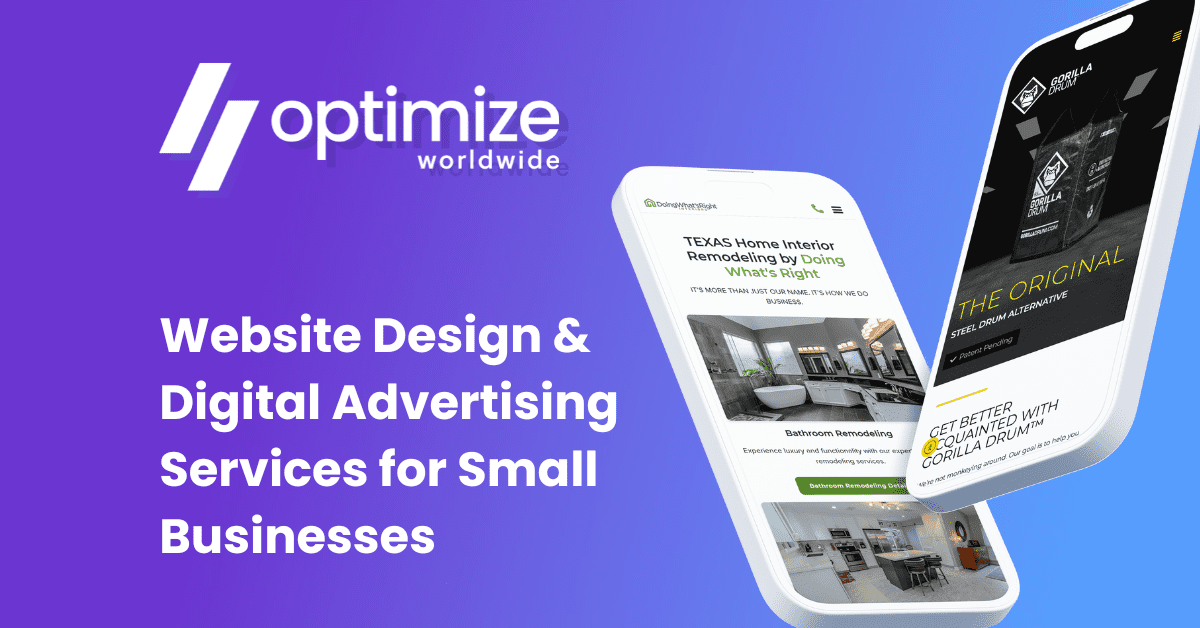Web design may be used to improve your SEO (Search Engine Optimization) by making the website design more content friendly, and by making the coded design more search engine friendly. The website design is able to add a significant SEO drag factor onto a website, and poorly designed websites may be very difficult to fully search engine optimize. Here are ten tips that will help the web designer to create a more search engine friendly website design.
1 – Reduce the amount of heavy objects on your web page
Your website loading speed is very important, but remember that it is measured from the render, right up to the last item finishing loading. This means that if you have a particularly heavy item on your website page, then you need to take extra steps to make sure that everything else is as light as possible. Some people think that if they keep the overall design lightweight that it suddenly makes their pages load quicker and more search engine friendly. This is not the case, so keep a look out for heavy page elements.
2 – Make sure your web code is clean
This means that you should keep your website code to HTML only. It means externalizing things such as CSS and JavaScript. The search engines can only read HTML, so having other code on your page is inefficient and may even cause the search engine crawlers to skip parts of your website. It may slow down how quickly your website is coded, and some coding may be misinterpreted as bad or lazy HTML coding. Put other coding as an external resource and call to it from your HTML code.
3 – Call to your CSS early on
Your CSS is used to format and lay out the page on the browser. If you call for it earlier then the page will render a little quicker and will be able to start the loading process a little quicker. It helps to get things done faster, which is better for your SEO and for your bounce rate. There are guidelines for just how high up the HTML code you can call for your CSS, so make sure you look it up first.
4 – Tighter code will load and render a little faster
Using HTML5 is going to allow you to create tighter code. HTML5 has little shortcuts that mean you do not have to write as much code in order to do the same things that you used to. This is very obvious when it comes to embedding a video onto your web page. Tight code also means that you are not going to long way about writing your code. It means literally finding a way of having less code on the screen whilst still having the website do the same thing. The tighter the code is, then the faster the website loads (in most cases).
5 – Put duplicate text into image files
As a website designer, you are probably going to have problems with duplicate content if you are being asked to put written content into your design. The most common problem is the duplication of a tag line. The tag line may appear under the logo as it sits on each page. Avoid duplication penalties by putting the written content into an image too. The search engines cannot read images, so you can put as much written content onto it as you like and you will not receive any duplication penalties.
6 – The content dictates SEO, so make a website content ready
If you are creating the website but are not filling it with content, then make sure it is SEO content ready (also known as optimizable). This means putting in the Meta tags, and maybe even setting up page areas that are surrounded with title tags and H tags. That way, all the web master has to do is enter the text in the correct spaces and the web page is optimized. There are WordPress themes (templates) that are optimizable up to 90%, and you should be aiming for something similar with your website (although it is harder to optimize a website up to 90% than it is for a blog).
7 – Navigation makes your website more search engine friendly
This means that having a good navigation structure and system is going to make it easier for your users to get around your website, meaning that the search engines are going to rank you higher. A good navigation system is all part of making your website more usable, which is what the search engines love.
Consider the three-click rule when designing your website, and make sure that your anchor text is descriptive. Try not to duplicate your anchor text on your website, and try to make it so that every page has at least three internal links pointing to it.
8 – Make your URLs search engine friendly
This means making them descriptive and readable. If they may be read and understood by a human user then they are more search engine friendly. This may require you to change your website by removing web pages and adding new ones with more search engine friendly URLs. But, it is something that you need to do in order to make your website more search engine friendly.
9 – There are no quick tips
Building a high quality website takes a lot of time, even if you are not adding the content yourself. Brevity is the enemy of SEO, so make sure you take as long as is required to make a website, and use as much content (written or otherwise) as is needed. It takes a long time to plan your website because website planning takes a long time. The people who create websites without any sort of plan are the ones who end up crippling their SEO. Creating something that is useful and SEO friendly takes time and cannot be rushed.
10 – Think about W3C Standards
You do not have to follow them to the letter. There are no rules but the rules Google makes for ourselves (a homage to T2 there). Following the W3C standards is a good idea because it encourages a lot of the better behaviors for web design, but the W3C standards are not tied to the Google search engine rules. If Google decides tomorrow that a website cannot rank highly without a Muslim prayer on it, then no amount of following W3C standards is going to help you. Run your code through a few free W3C standards checkers to get an idea of the things you are missing or could improve. It will help to make your web page a little more search engine friendly.
 About the Author
About the Author
The guest post was written by Sonia Jackson from http://www.cool-essays.com. She writes essays on different topics and can give you useful advice. She likes reading, traveling, watching movies and is always open to communicating with her readers!

 About the Author
About the Author